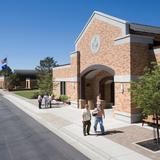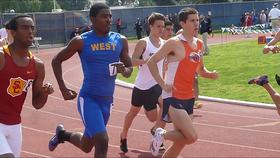- White Earth Tribal and Community College is a private tribal land-grant community college in Mahnomen, Minnesota. It was established by the White Earth Reservation Tribal Council in 1997.
School Highlights
White Earth Tribal and Community College serves 123 students (46% of students are full-time).
The college's student-teacher ratio of 13:1 is lower than the state community college average of 22:1.
Minority enrollment is 70% of the student body (majority Black), which is more than the state average of 42%.
Quick Facts (2025-26)
- Enrollment: 123 students
- Student-teacher ratio: 13:1
- Minority enrollment: 70%
- Source: Integrated Postsecondary Education Data System (IPEDS)
Top Rankings
White Earth Tribal and Community College ranks among the top 20% of public schools in Minnesota for:
Category
Attribute
School Resources
School Overview
White Earth Tribal and Community College
(MN) Community College Avg.
Carnegie Classification
Tribal colleges
Associate's Colleges: Mixed Transfer/Career & Technical-Mixed Traditional/Nontraditional
Institution Level
At least 2 but less than 4 years
At least 2 but less than 4 years
Institution Control
Private not-for-profit
Public
Total Faculty
n/a
171 staff
School Calendar
Student Body
The student population of White Earth Tribal and Community College has grown by 25% over five years.
The student-teacher ratio of 13:1 has increased from 6:1 over five years.
The White Earth Tribal and Community College diversity score of 0.53 is less than the state average of 0.63. The school's diversity has stayed relatively flat over five years.
Total Enrollment
123 students
2,858 students
Student-Teacher Ratio
13:1
22:1
# Full-Time Students
57 students
1,050 students
# Part-Time Students
66 students
1,808 students
# Enrollment Undergraduate
n/a
420 students
# Full-Time Undergraduate Students
57 students
915 students
# Full-Time Graduate Students
n/a
38 students
# Part-Time Undergraduate Students
66 students
1,771 students
# Part-Time Graduate Students
n/a
12 students
Total Dormitory Capacity
n/a
116 students
% American Indian/Alaskan
1%
1%
% Asian
n/a
6%
% Hispanic
n/a
8%
% Black
7%
15%
% White
30%
58%
% Hawaiian
61%
1%
% Two or more races
1%
4%
% Non Resident races
n/a
1%
% Unknown races
n/a
6%
Diversity Score
0.53
0.63
College Completion Rate (Students who graduate in less than 4 years)
26%
34%
College Completion Rate (Students who graduate in 4 years or more than 4 years)
n/a
57%
Tuition and Acceptance Rate
% Students Receiving Some Financial Aid
100%
89%
Median Debt for Graduates
n/a
$12,264
Median Debt for Dropouts
n/a
$6,750
Acceptance Rate
n/a
94%
SAT Reading
n/a
625
SAT Math
n/a
600
SAT Writing
n/a
565
ACT Composite
n/a
24
ACT English
n/a
24
ACT Math
n/a
23
ACT Writing
n/a
8
Source: 2024 (or latest year available) Integrated Postsecondary Education Data System (IPEDS) , School Administrators
Frequently Asked Questions
What is White Earth Tribal and Community College's ranking?
White Earth Tribal and Community College ranks among the top 20% of community college in Minnesota for: Average community college minority breakdown and Percent of students receiving financial aid.
Recent Articles

Dual Enrollment 2025: Earning College Credit in High School
Explore the latest dual enrollment trends, policies, costs, and benefits for students and families in 2025.

Student Success Programs That Actually Work at Community Colleges
Discover evidence-based student success programs at community colleges for 2025, with outcomes, examples, and actionable strategies.

Best Community Colleges by Career Path in 2025
Explore top community colleges for career-training programs in 2025, including healthcare, IT, skilled trades and business pathways.











